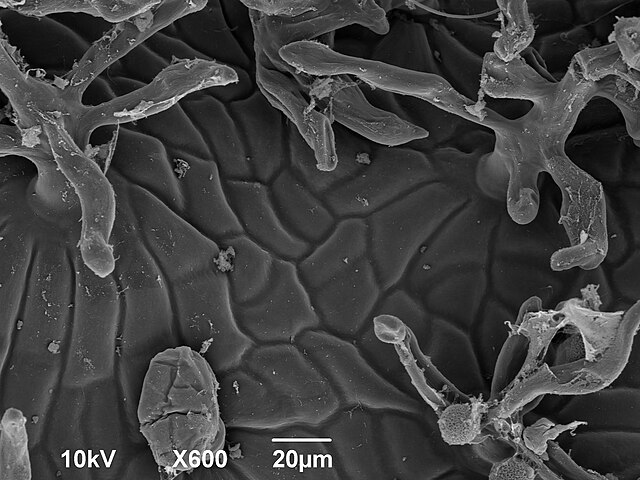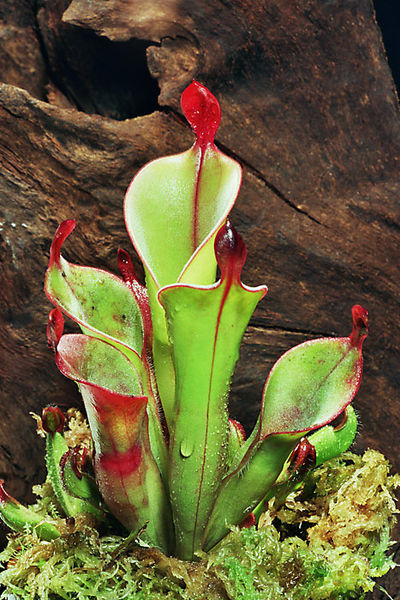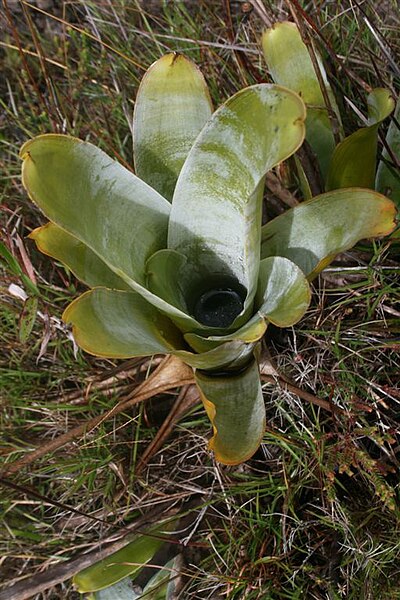Pitcher plants are several different carnivorous plants that have modified leaves known as pitfall traps—a prey-trapping mechanism featuring a deep cavity filled with digestive liquid. The traps of what are considered to be "true" pitcher plants are formed by specialized leaves. The plants attract and drown the prey with nectar.
Scanning electron micrograph inner surface of pitcher plant
Pitcher plants growing in a bog in Pennsylvania
Nepenthes muluensis pitchers hang from tendrils. (This specimen is cultivated.)
Most North American pitcher plants belong to the genus Sarracenia.
Carnivorous plants are plants that derive some or most of their nutrients from trapping and consuming animals or protozoans, typically insects and other arthropods, and occasionally small mammals and birds. They still generate all of their energy from photosynthesis. They have adapted to grow in waterlogged sunny places where the soil is thin or poor in nutrients, especially nitrogen, such as acidic bogs.
They can be found on all continents except Antarctica, as well as many Pacific islands. In 1875, Charles Darwin published Insectivorous Plants, the first treatise to recognize the significance of carnivory in plants, describing years of painstaking research.
An upper pitcher of Nepenthes lowii, a tropical pitcher plant that supplements its carnivorous diet with tree shrew droppings.
The pitchers of Heliamphora chimantensis are an example of pitfall traps.
Darlingtonia californica: note the small entrance to the trap underneath the swollen "balloon" and the colourless patches that confuse prey trapped inside.
Brocchinia reducta: a carnivorous bromeliad








